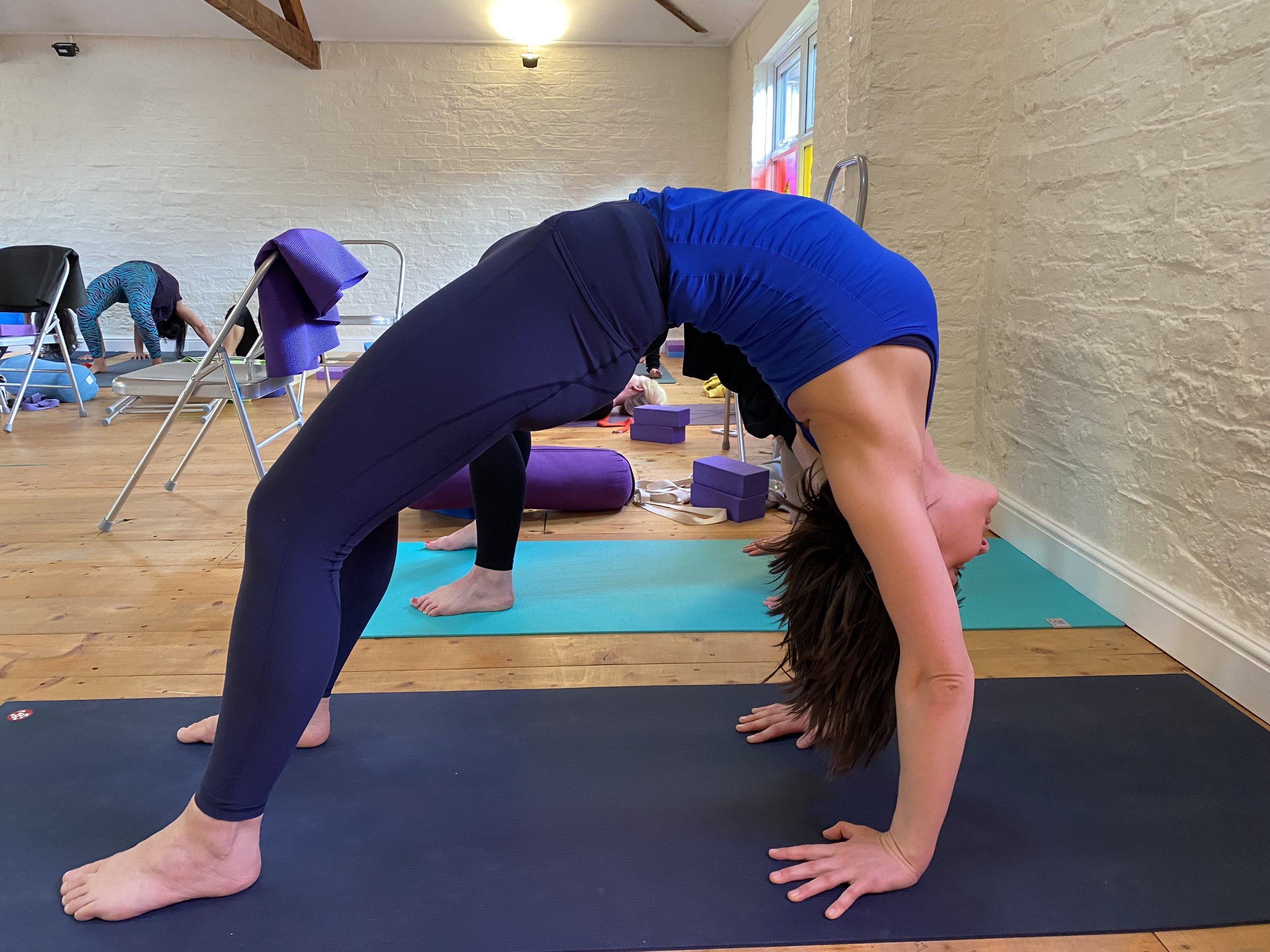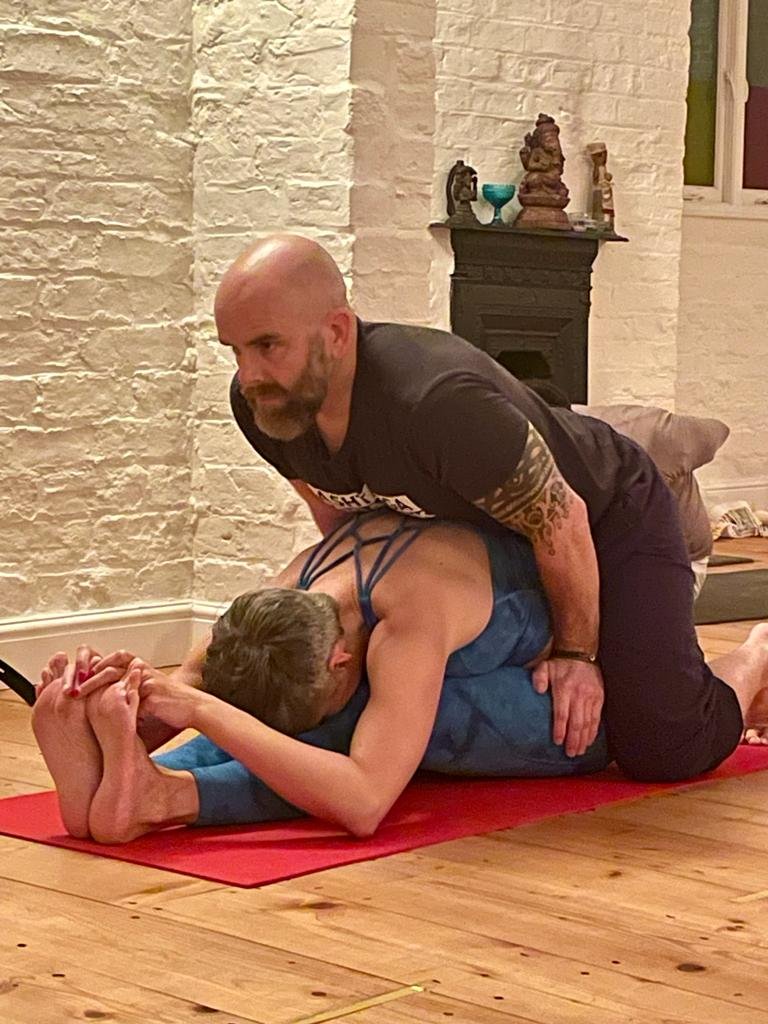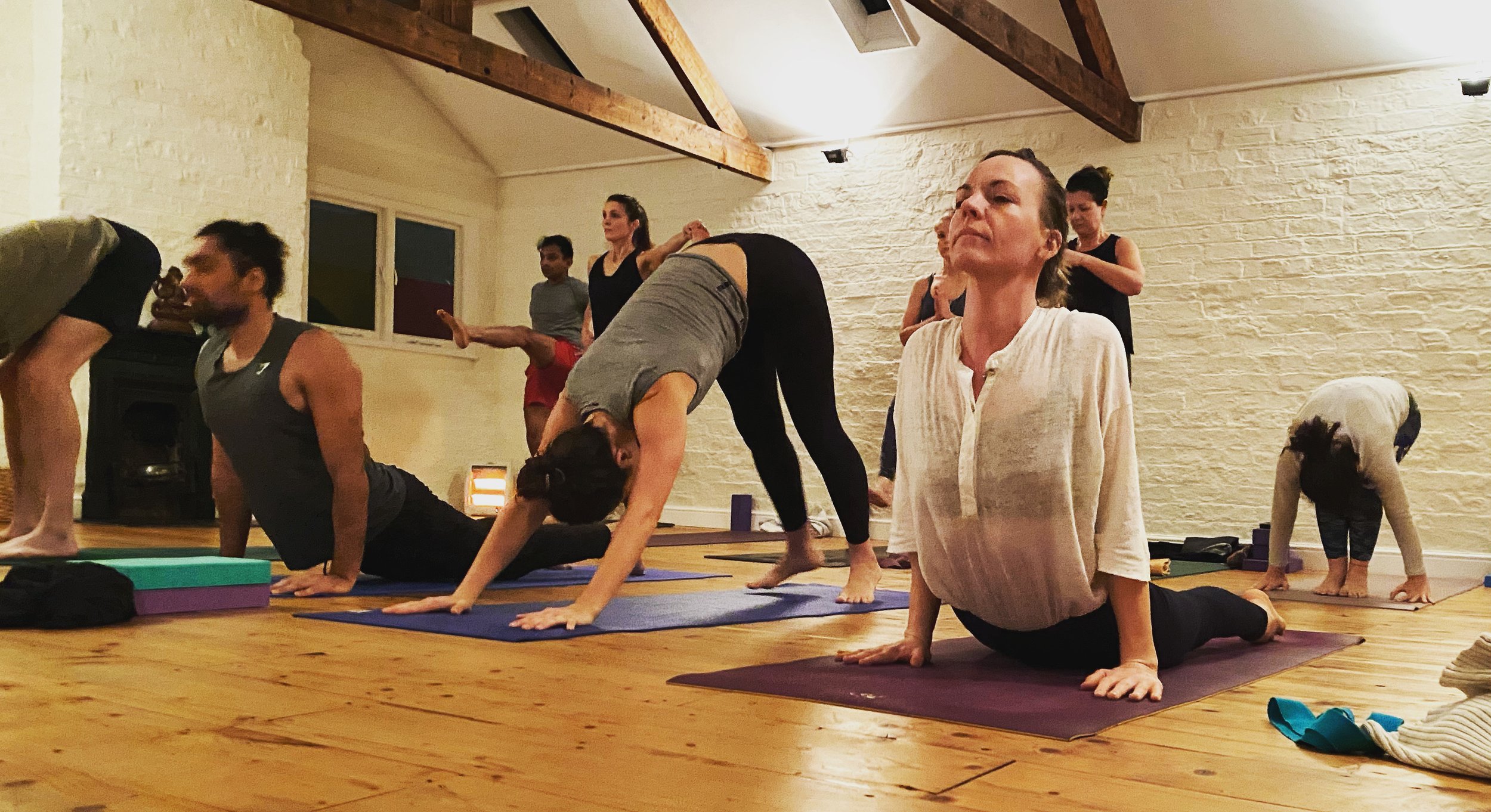
The Journey of Ashtanga Yoga.
Why Ashtanga Yoga?
-
Structure.
Ashtanga Yoga is a disciplined practice built around a clear structure of postures performed in a set order. This repetition creates a strong foundation, allowing students to refine technique, build strength, and deepen the breath. Over time, the sequence becomes a moving meditation, helping the mind settle as the body flows through familiar poses. The consistent structure also supports progress, fostering discipline, self-awareness, and mindfulness.
-
Rooting.
Rooting in Ashtanga Yoga comes from returning to the same sequences and foundational postures. This steady base allows practitioners to feel grounded in their practice, building strength and stability while cultivating trust in the process. With consistent rooting, growth becomes balanced, sustainable, and connected to tradition.
-
Growth.
In the Mysore style of Ashtanga Yoga, students receive personalised guidance and adjustments, allowing each practitioner to move safely at their own pace. This individual attention refines alignment and technique, while supporting unique challenges and goals. Through this process, steady growth emerges, deepening the teacher–student connection and making the practice both transformative and sustainable.
-
Journey.
The Ashtanga Yoga community is a global network of practitioners connected by discipline, self-discovery, and mutual support. In the Mysore room or online, students share challenges and triumphs, creating a collective energy that transcends culture and background. This shared path honours tradition while allowing each person to find their own rhythm, reminding us that the journey itself is as meaningful as the destination.






A unique approach to learning Ashtanga Yoga
The progression of Ashtanga students through Iyengar inspired methodology, as taught by Christian Pisano, emphasises a deeply refined approach through three pillars of asana practice, blending precision, dynamism, and individual adaptation.
1. Vinyasa: A new student begins learning vinyasa by focusing on the harmonious connection between breath and movement, creating a flowing rhythm that links postures together. Each movement is paired with either an inhale or an exhale, establishing a meditative flow while fostering physical engagement. Within this dynamic sequence, moments of stillness in each posture are introduced, allowing the student to pause, refine alignment, and observe the breath while holding the pose. These still moments offer an opportunity to balance effort and ease, cultivating stability, awareness, and presence. This integration of movement and stillness builds the foundation for a mindful and embodied practice.
2. Vinyasa Krama: As students develop stability in the practice, the next step is to mindfully transition from one asana to the next. Vinyasa Krama is the deliberate and systematic progression of postures, where each movement is thoughtfully linked to the breath and sequenced to prepare the body and mind for the next stage of practice. This method emphasises precision, alignment, and a gradual buildup of strength, stability, and awareness, ensuring that students move through their practice with purpose and ease. By breaking down complex movements into manageable steps, Vinyasa Krama allows practitioners to deepen their understanding of postures while respecting their individual capabilities, fostering a sense of balance and mindfulness throughout the journey.
3. Viniyoga: The final stage adapts the practice to the individual’s unique needs, integrating Christian Pisano’s profound teachings on embodiment and mindfulness. This phase encourages a more introspective and therapeutic approach, where the practice becomes a means of self-inquiry and union with the deeper aspects of yoga.
This methodology combines the flowing nature of Ashtanga with Iyengar’s precision and personalisation, offering a transformative path for physical, mental, and spiritual growth.
“The practice mat should be laid out as though it is our funeral pyre. The fire of asana is used to burn the residue of muscular and organic tensions, as well as mental conceptualisation and bodily identification. The differentiations projected by the inner organ (antahkarana): intellect (buddhi), mind (manas), ego (ahamkara), are reduced to ashes”
